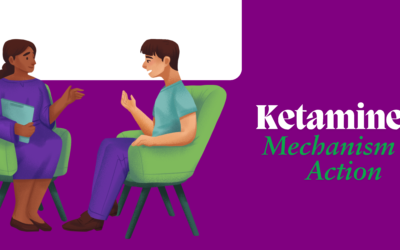The Benefits of Ketamine Therapy for Patients Suffering from PTSD
Post-Traumatic Stress Disorder (PTSD) is a debilitating mental health condition that can significantly impact the lives of those who suffer from it. Traditionally, PTSD has been treated with a combination of therapy and medications like antidepressants, but these treatments aren’t always effective for every patient. Recently, however, a new and promising treatment has emerged: ketamine therapy. In this blog, we’ll explore how ketamine is becoming a groundbreaking option for PTSD patients and the ways it offers relief from the distressing symptoms of this disorder.
Understanding PTSD and Its Challenges
PTSD is often triggered by experiencing or witnessing traumatic events such as war, accidents, abuse, or natural disasters. Its symptoms include:
- Intrusive memories or flashbacks of the traumatic event.
- Hyperarousal, leading to anxiety and difficulty relaxing.
- Emotional numbness or detachment.
- Avoidance of places or situations that remind one of the trauma.
While traditional treatments like Cognitive Behavioral Therapy (CBT) and selective serotonin reuptake inhibitors (SSRIs) help many individuals, they can fall short in providing fast or adequate relief. This is where ketamine therapy is proving to be a game-changer.
How Ketamine Works for PTSD
Originally developed as an anesthetic, ketamine has been used in recent years as an alternative treatment for depression and anxiety disorders. Its efficacy in treating PTSD is now becoming more widely recognized. Here’s how ketamine helps:
- Rapid Relief from Symptoms
One of the most compelling benefits of ketamine therapy is the speed with which it acts. While traditional antidepressants can take weeks to show effects, ketamine can alleviate PTSD symptoms within hours or days. This rapid relief is crucial for individuals in severe distress or those who have suicidal thoughts. - Modulates Brain Chemistry
Ketamine works differently from other medications. It targets the brain’s glutamate system, rather than serotonin or dopamine, which helps create new neural connections. By doing so, it can help “rewire” pathways that have been negatively impacted by trauma, providing patients with a sense of relief and allowing them to process emotions more effectively. - Improves Therapy Outcomes
For patients engaged in psychotherapy, ketamine therapy can improve outcomes by making it easier to engage with therapeutic techniques. When ketamine reduces the overwhelming symptoms of PTSD, patients are more able to focus and participate in trauma-focused therapy sessions. This synergy between ketamine treatment and traditional therapy can lead to lasting recovery. - Addresses Treatment-Resistant PTSD
One of the major challenges with PTSD is that it can sometimes be resistant to conventional treatments. Patients who have tried multiple antidepressants or therapies without success may find that ketamine works when other treatments have failed. This offers hope to individuals who may feel they have exhausted their options. - Improves Mood and Cognitive Function
Beyond its ability to target PTSD symptoms directly, ketamine has been shown to improve overall mood and cognitive function. By elevating mood, ketamine therapy can help reduce the negative thought patterns often associated with PTSD. Many patients also report improved clarity of thought and a better ability to manage daily stressors.
What to Expect from Ketamine Therapy
Patients undergoing ketamine treatment for PTSD typically receive it via intravenous (IV) infusion under medical supervision. The doses used for therapeutic purposes are much lower than those used for anesthesia, making the experience generally safe when conducted by professionals. Some clinics also offer intranasal ketamine or ketamine lozenges.
During a ketamine infusion, patients may experience altered perceptions, a sense of detachment, or mild hallucinations, but these effects are temporary and often considered part of the healing process. After the session, most patients feel an immediate reduction in anxiety and depressive symptoms, though the full effect of the treatment may develop over time.
A typical course of ketamine therapy for PTSD includes multiple infusions over a few weeks. Follow-up treatments or maintenance infusions may be recommended depending on individual response.
Is Ketamine Right for You?
Ketamine therapy is not a cure for PTSD, but it can be a powerful tool in managing the symptoms and improving quality of life. If you or a loved one is struggling with PTSD, especially if traditional treatments haven’t been effective, ketamine may offer an alternative path to healing. As with any treatment, it’s essential to consult with a healthcare provider who can assess whether ketamine is the right option based on your specific medical history and symptoms.
Final Thoughts
PTSD is a complex and challenging condition, but ketamine therapy is offering new hope for those who have long struggled with the debilitating effects of trauma. With its rapid-acting benefits and ability to enhance traditional therapies, ketamine is emerging as a promising treatment option, particularly for individuals who have not found relief through conventional methods. If you’re exploring options for managing PTSD, ketamine therapy is worth considering as part of a comprehensive treatment plan.
By offering relief when other treatments may fall short, ketamine is helping patients take significant steps toward healing and reclaiming their lives.
The Rise of Ketamine Clinics: What to Expect
In recent years, the medical landscape has witnessed a significant shift in the approach to mental health and pain management treatments. Amidst this transformative movement is the rapid rise of ketamine clinics. Once primarily known as an anesthetic, ketamine is now...
Success Rates of Ketamine in Treatment-Resistant Cases
In recent years, ketamine has emerged as a groundbreaking treatment option for individuals suffering from treatment-resistant depression (TRD) and other mental health disorders. Traditionally used as an anesthetic, ketamine is being repurposed due to its rapid-acting...
Ketamine’s Mechanism of Action
Ketamine, initially developed as an anesthetic in the 1960s, has garnered significant attention over the last two decades for its off-label use in treating various mental health conditions, particularly depression and anxiety disorders. Its rapid action and unique...




